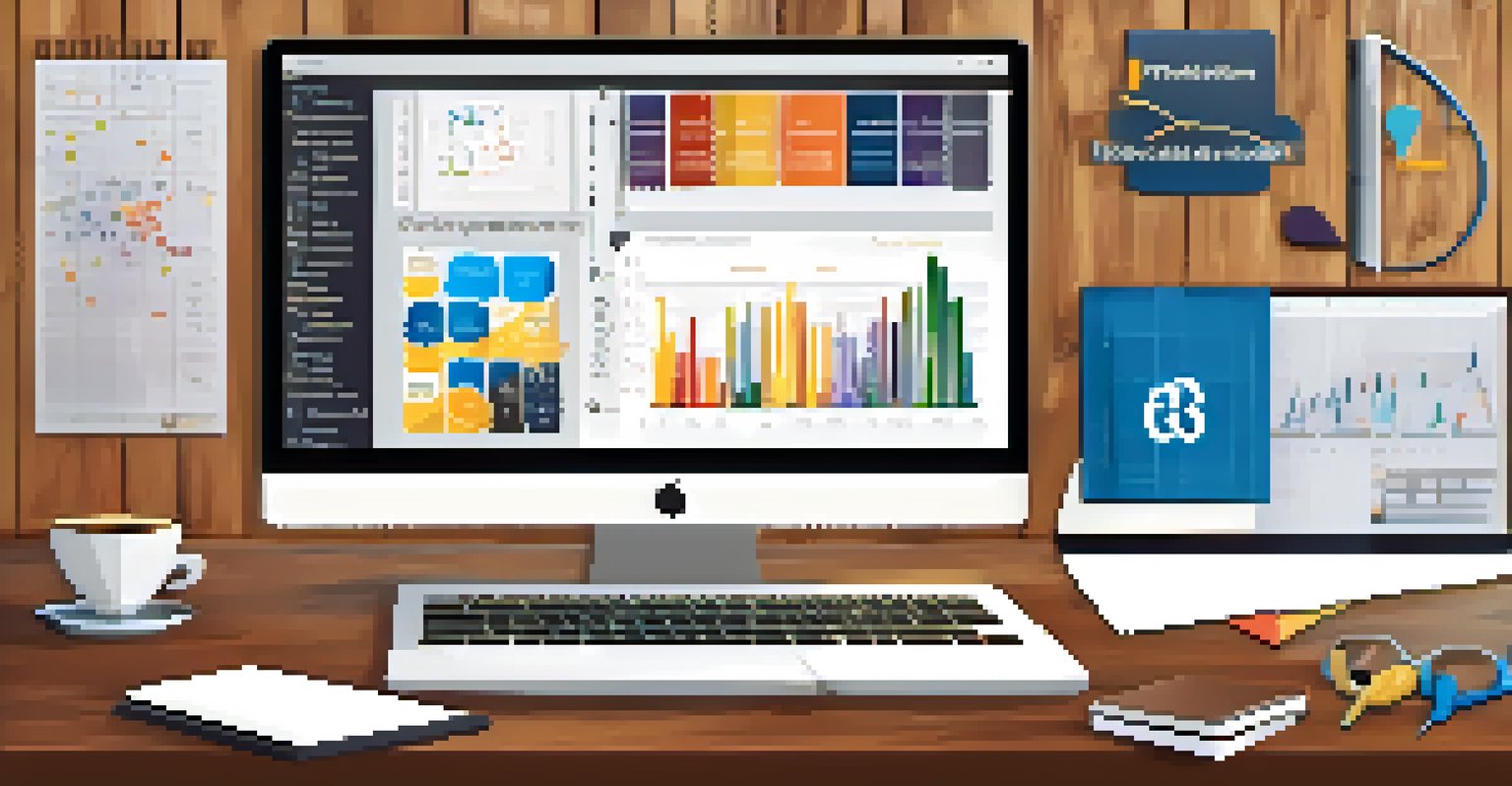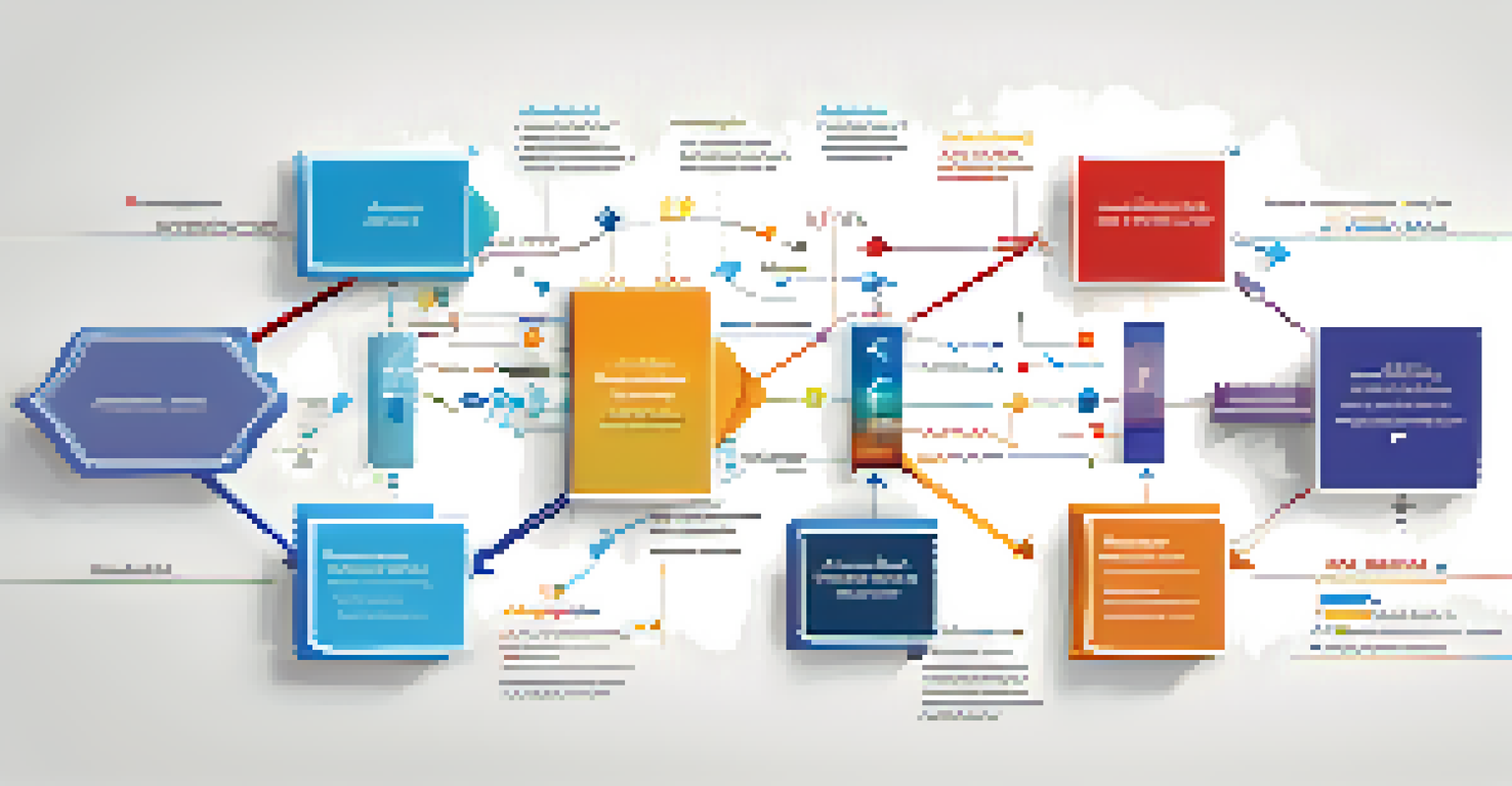Data Science Tools: Essential Software for Data Analysis

Introduction to Data Science Tools and Their Importance
Data science is a multifaceted field that relies heavily on various tools for analysis. These tools enable data scientists to extract insights, visualize data, and make informed decisions. With the right software, complex data sets can be transformed into meaningful information that drives action.
Data is the new oil, but like oil, data needs to be refined to be valuable.
Choosing the right data science tools is crucial, as they can significantly impact the efficiency and effectiveness of your analysis. The landscape of data science tools is vast, ranging from programming languages to specialized software. Understanding the available options is essential for any aspiring data scientist.
In this article, we will explore essential data science tools that streamline data analysis, making it easier to derive insights and communicate findings. Whether you are a beginner or an experienced professional, having a grasp of these tools can enhance your data science journey.
Programming Languages: Python and R
At the heart of data science lie programming languages, with Python and R being the most popular choices. Python's simplicity and versatility make it a favorite among beginners and experts alike, while R is tailored for statistical analysis and data visualization. Both languages have extensive libraries that facilitate various data analysis tasks.

For instance, libraries like Pandas and NumPy in Python allow for efficient data manipulation, while ggplot2 in R excels at creating stunning visualizations. The choice between Python and R often depends on the specific requirements of a project and personal preference. Each language has its strengths, and many data scientists find value in learning both.
Key Data Science Tools Explained
Understanding essential data science tools like programming languages, visualization software, and collaboration platforms is crucial for effective data analysis.
Ultimately, mastering either Python or R can significantly enhance your data analysis capabilities. As you become more comfortable with these programming languages, you’ll find that they open up new avenues for exploring and analyzing data.
Data Visualization Tools: Tableau and Power BI
Data visualization is a crucial part of data analysis, enabling stakeholders to understand complex data through visual representations. Tools like Tableau and Power BI are at the forefront of this field, offering intuitive interfaces and powerful capabilities. They allow users to create interactive dashboards and reports that make data more accessible.
In God we trust; all others bring data.
Tableau is known for its ability to handle large data sets and create visually appealing graphics, making it a popular choice among businesses. On the other hand, Power BI integrates seamlessly with Microsoft products, making it an attractive option for organizations already using Microsoft ecosystems. Both tools help convey insights effectively, fostering data-driven decision-making.
Choosing the right visualization tool often depends on existing infrastructure and specific use cases. Regardless of the choice, being proficient in data visualization tools can greatly enhance your ability to communicate findings to a broader audience, ultimately leading to more informed decisions.
Data Manipulation Tools: SQL and Excel
Data manipulation is a foundational skill in data science, and tools like SQL and Excel play vital roles in this process. SQL, or Structured Query Language, is essential for querying and managing data in relational databases. It allows data scientists to efficiently retrieve and manipulate data, making it a crucial skill for anyone working with large datasets.
Excel, on the other hand, remains a popular tool for data analysis due to its user-friendly interface and widespread use in business environments. Many people are already familiar with Excel, making it an accessible option for data manipulation tasks. Its functionalities, including pivot tables and formulas, are incredibly powerful for smaller datasets.
Python and R: The Core Languages
Python and R are the most popular programming languages in data science, each offering unique strengths for data manipulation and analysis.
Both SQL and Excel have their unique advantages, and proficiency in both can provide a solid foundation for data analysis. While SQL is indispensable for handling large databases, Excel is excellent for quick analyses and smaller scale tasks, allowing data scientists to choose the best tool for the job.
Machine Learning Frameworks: TensorFlow and Scikit-learn
Machine learning is an integral part of data science, and frameworks like TensorFlow and Scikit-learn make it easier to implement algorithms. TensorFlow, developed by Google, is a powerful library for building deep learning models. It is particularly useful for complex tasks such as image and speech recognition, thanks to its flexibility and scalability.
Scikit-learn, on the other hand, focuses on traditional machine learning algorithms, offering a simple and efficient tool for data mining and data analysis. It provides easy-to-use functions for tasks like classification, regression, and clustering, making it a go-to choice for many data scientists. The library is built on Python, which means users can leverage the power of Python while applying machine learning techniques.
Both TensorFlow and Scikit-learn have their niches in the machine learning landscape. Depending on your project requirements, familiarity with either framework can greatly enhance your machine learning capabilities.
Big Data Technologies: Apache Hadoop and Spark
As data volumes continue to grow, big data technologies like Apache Hadoop and Spark have become essential for handling massive datasets. Hadoop is an open-source framework that allows for distributed storage and processing of large data sets across clusters of computers. Its scalability and fault tolerance make it an ideal choice for big data applications.
Spark, on the other hand, is known for its speed and ease of use. It provides an interface for programming entire clusters with implicit data parallelism and fault tolerance. Spark’s in-memory processing capabilities make it significantly faster than Hadoop for certain workloads, allowing for real-time data processing and analysis.
Importance of Data Visualization
Data visualization tools like Tableau and Power BI are vital for transforming complex data into accessible insights that drive decision-making.
Understanding these big data technologies is crucial for any data scientist working with large datasets. They enable more efficient data processing, allowing for quicker insights and better decision-making in an increasingly data-driven world.
Collaboration Tools: Git and Jupyter Notebooks
Collaboration is key in data science projects, and tools like Git and Jupyter Notebooks facilitate teamwork and version control. Git is a version control system that allows teams to track changes in code and collaborate efficiently on projects. It helps manage different versions of scripts and ensures that everyone is working on the latest iteration.
Jupyter Notebooks, on the other hand, are interactive web applications that allow for the creation and sharing of documents that contain live code, equations, visualizations, and narrative text. They are particularly useful for documenting the data analysis process and sharing findings with stakeholders. The ability to combine code and visualization in one document enhances communication and understanding.

Both Git and Jupyter Notebooks enhance collaboration and transparency in data science projects. By using these tools, teams can work together more effectively, ensuring that everyone is aligned and informed throughout the data analysis process.
Conclusion: Choosing the Right Tools for Your Needs
In conclusion, the right data science tools can make a significant difference in the efficiency and effectiveness of your data analysis. From programming languages like Python and R to visualization tools like Tableau and Power BI, each tool has its unique strengths and applications. Understanding these tools and their capabilities is essential for any data scientist looking to excel in the field.
As you embark on your data science journey, consider your specific needs and the types of data you will be working with. Experimenting with different tools can help you find the perfect fit for your projects and enhance your overall analysis. Remember, the best tool is the one that aligns with your goals and makes your work easier.
Ultimately, mastering a combination of these tools will empower you to analyze data more effectively and communicate insights more clearly. Embrace the learning process, and soon you'll find yourself navigating the data science landscape with confidence.